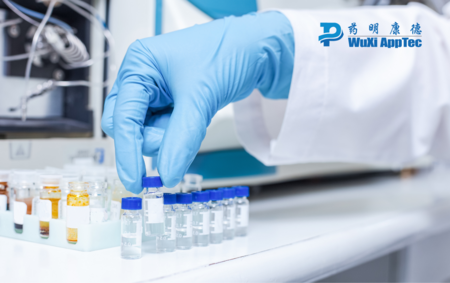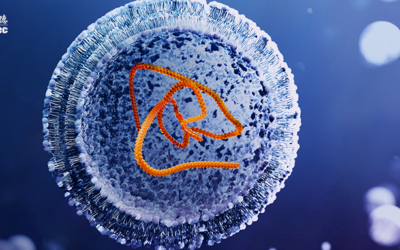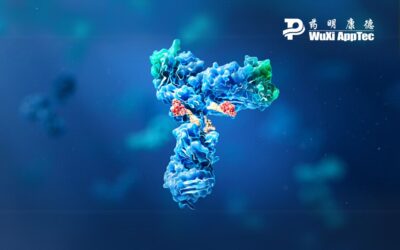DMPK testing helps drug developers investigate how a drug compound is absorbed, distributed, metabolized, and eliminated (ADME) by the body. The earlier these properties can be understood, the better – which is why many drug developers start the process with non-GLP bioanalysis. Here’s why.
Whether you’re a start-up drug developer, academic with limited resources, or a well-funded pharmaceutical company looking to optimize time and costs, you want to understand DMPK properties for your compound as soon as possible.
DMPK data plays a central role in helping you:
- Optimize the properties of drug-like molecules.
- Define potency against a target.
- Optimize PK parameters.
- Reduce the risk of drug-drug interactions.
To get these parameters and investigate these properties, you need bioanalysis.
What is Bioanalysis for DMPK Testing?
Bioanalytical testing, or bioanalysis, is a key component of the entire drug development spectrum. The goal is to quantify the drug or its metabolites in biological matrices, like blood, plasma, urine, and tissues.
In the context of DMPK, bioanalysis is all about quantifying the expectations of drug behavior over time. This preliminary data informs future steps of the process, from discovery, to preclinical testing and IND submission, to first-in-human trials and NDA submission.
Bioanalysis requires the precise development and validation of analytical techniques to ensure that what you want to measure is accomplished in the most robust and repeatable way. There are hundreds of nonproprietary methods available that researchers can use, but if the right method doesn’t yet exist, or if you’re working with a new modality, a method will need to be developed and validated.
This process, of course, takes time and requires a strict protocol according to GLP. While these steps can’t be skipped, there are things that can be streamlined under non-GLP bioanalysis when you’re in early stages of drug development.
GLP vs. Non-GLP Bioanalysis for DMPK
GLP, which stands for Good Laboratory Practice, is a set of quality control guidelines for nonclinical studies. These standards focus on the organizational processes and documentation around the studies, including but not limited to:
- Qualified personnel with well documented resumes, job descriptions, training sheets, and certifications.
- Qualified instruments with well-documented records of sensitivity calibration and instrument qualification, operation qualification, and performance qualification (IQ, OQ, PQ).
- Proper storage and lab conditions, including temperatures and processes around storage.
In contrast to GLP, non-GLP testing does not require in-depth documentation and record keeping processes. You don’t need:
- Quality assurance to inspect record or study conduct.
- Test article dosing solution concentration analysis.
- Complete study reports.
- Methodological validation through quality control.
DMPK testing is a crucial step of the drug development process, which means maintaining quality (even outside regulatory standards) is just as critical. Discovery bioanalysis requires a precise and expert approach to effectively analyze samples without a validation. However, when deployed at the right time, non-GLP bioanalysis can offer huge advantages.
Why Non-GLP Bioanalysis Matters for DMPK Testing
#1. Streamline early stage DMPK testing
Non-GLP bioanalysis can help drug developers move faster during early stage DMPK testing. Thanks to the decreased regulatory scrutiny, these studies can be conducted with shorter testing durations, smaller sample sizes, and faster report delivery.
Ultimately, this helps drug developers sort through the noise and find their drug candidate more efficiently.
#2. Focus on scientific discovery
In early discovery, much of the DMPK bioanalysis work that happens will not move forward to the next stages. While high standards for quality should always be kept, it would be inefficient to spend time and money on GLP studies at this point. This is the time to focus on the science of discovery.
With non-GLP bioanalysis, drug developers have the freedom to experiment with candidates without worrying about the regulatory work. Once you find the candidate you want to pursue, then you can shift to GLP.
#3. Minimize risk
Non-GLP studies don’t require the regulatory lift that GLP studies do, which means you can get more done in less time. This allows you to focus on vetting more options and getting your candidate right earlier. As a result, you minimize the risk of failure during preclinical studies.
#4. Focus budget on viable drug candidates
Finally, with less stringent requirements on sample size and testing durations, researchers can make a faster decision about whether to move forward with the program. Not only does this save time and minimize risk of failure in the future, it allows you to optimize costs by investing the majority of your resources into viable candidates.
Conclusion
Because conducting GLP studies requires more resources than non-GLP studies, in early discovery DMPK testing, non-GLP bioanalysis can help you streamline the process and find the right candidate faster.
Whether or not your studies are under regulatory control, you should always have qualified personnel handling your samples, calibrated instruments for accurate data, and clean, well-organized, and temperature-controlled facilities. However, you don’t have to worry about the documentation that comes with all of the above until you land on the right candidate.
Once you decide to move forward, you will have to repeat DMPK testing under GLP to ensure the data generated can be used for regulatory submission and approval. It’s important to work with a quality laboratory testing partner that can help you decide if non-GLP bioanalysis is the right fit, and quickly pivot to GLP conditions when needed.
Learn more about WuXi AppTec’s DMPK services or talk to one of our experts by contacting us today.
As a global company with operations across Asia, Europe, and North America, WuXi AppTec provides a broad portfolio of R&D and manufacturing services that enable the global pharmaceutical and life sciences industry to advance discoveries and deliver groundbreaking treatments to patients. Through its unique business models, WuXi AppTec’s integrated, end-to-end services include chemistry drug CRDMO (Contract Research, Development and Manufacturing Organization), biology discovery, preclinical testing and clinical research services, helping customers improve the productivity of advancing healthcare products through cost-effective and efficient solutions. WuXi AppTec received an AA ESG rating from MSCI for the fourth consecutive year in 2024 and its open-access platform is enabling around 6,000 customers from over 30 countries to improve the health of those in need – and to realize the vision that “every drug can be made and every disease can be treated.”


